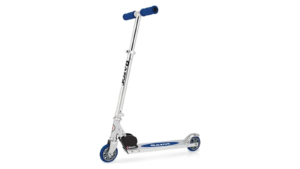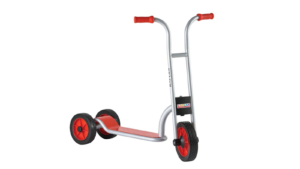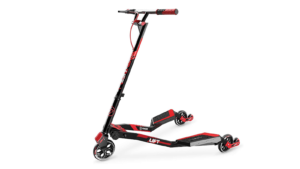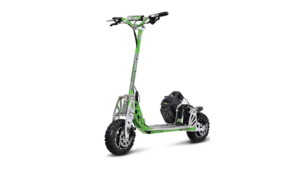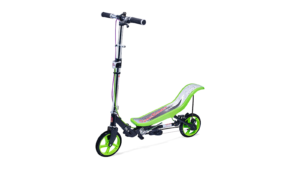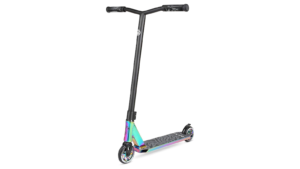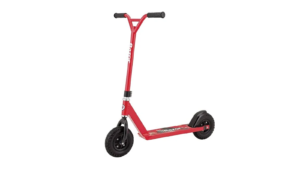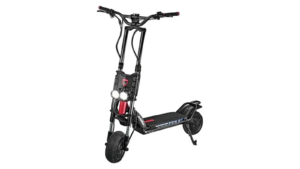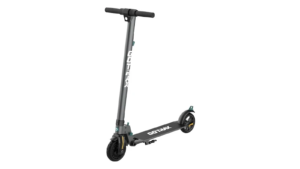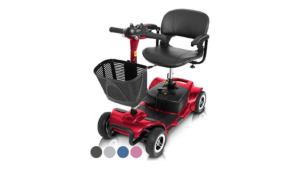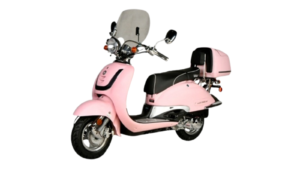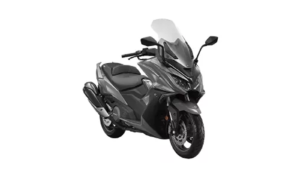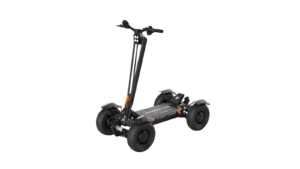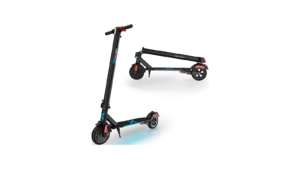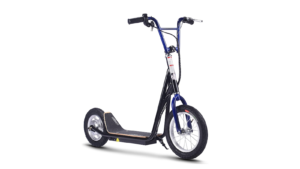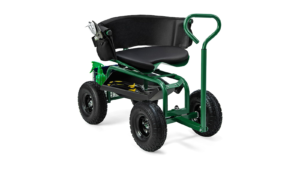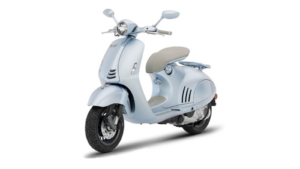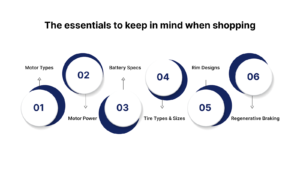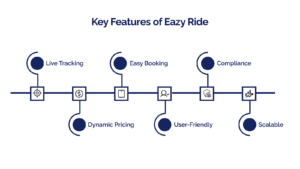 AllAnalytics and research
AllAnalytics and research
A Comprehensive Guide to Scooter Types for Mobility Businesses
Are you looking to start or expand your fleet business and want to understand which scooter types best suit your needs? With so many options on the market, it’s tough to know which models will balance cost, durability, and rider satisfaction.
You might be worried about operational efficiency, finding scooters that require less maintenance but perform reliably in your specific environment. Safety and comfort are also top concerns since the scooters you choose directly affect how often riders return.
This guide is here to help. Whether you’re managing a startup, running a campus fleet, or providing rentals for tourists, knowing the differences between scooter types is key to making smart purchasing decisions.
The global e-scooter sharing market was valued at USD 1.53 billion in 2024 and is expected to grow to USD 7.10 billion by 2033, expanding at a CAGR of 18.56%. That growth means now is the perfect time to build an outstanding fleet.
Let’s explore the scooter types that can power your business forward and keep your riders coming back.
Key Factors That Define Your Scooter Choice for Business
Three core factors stand out when selecting electric scooters for your fleet: price, range, and speed. These set the foundation for matching scooters to your business needs.
- Price: Models range from under $600 to over $5,000. Lower-priced scooters may compromise on features and durability, while higher-end options offer enhanced safety and performance. Always prioritize quality batteries and proper certifications.
- Range: It depends on the battery, terrain, speed, and rider weight. Most scooters go 12 to 60 miles per charge. A longer range usually means heavier and more expensive scooters.
- Speed: Adult scooters top out between 15 and 60 mph. Public rentals limit speeds to about 15 mph by law. Around 20 mph strikes a good balance for commuting.
- ROI: Choose scooters that balance upfront cost and operational efficiency. Higher-quality scooters with better durability and range have lower maintenance costs and boost earnings over time.
With these basics in mind, let’s dive into the main scooter types to help you find the perfect fit for your fleet.
Also read: The Future of Micro-Mobility: Paving the Way for Sustainable Urban Transportation
Exploring Different Scooter Types for Your Fleet
Scooters come in various styles, each designed to meet different business needs and rider demands. Whether you’re building a light, portable fleet for urban commuters or a powerful, rugged lineup for diverse terrain, understanding the key scooter types helps you select the right fit to maximize operational efficiency and customer satisfaction.
Let’s explore the options:
Kick Scooters
Kick scooters are classic, human-powered vehicles known for their lightweight aluminum frames and simple, durable design with two small wheels. Ideal for fleet operators serving families, campuses, or community spaces, these scooters offer a safe and portable option for short, casual rides.
While not designed for tricks or rough terrain, their foldable frames and foot brakes make them convenient for quick trips and easy storage, perfect for shared mobility programs focused on accessibility and ease of use. This is the main reason that the Global Electric Kick Scooter Market is expected to grow from $3.6 billion in 2023 to $9.5 billion by 2033, at a Compound Annual Growth Rate (CAGR) of 10.19%.
Key Features:
- Simple, easy-to-use design
- Encourages physical activity and balance
- Suitable for kids, teens, and adults
- Lightweight and foldable for easy transport
- Foot brakes for added safety and control
Three-Wheel Scooters
These scooters are designed primarily for young children, beginners, or riders needing extra stability, making them more suited for personal use, family settings, or specialized community programs.
With two wheels at the front and one at the back (or vice versa), three-wheel scooters provide a stable base that helps beginners maintain balance easily. While they offer great safety and support for kids, they are rarely part of commercial scooter-sharing fleets due to limited appeal for general urban riders and operational inefficiencies.
Key Features:
- An extra wheel for improved stability and balance
- Perfect for beginners and young children
- Lean-to-steer design for intuitive control
- Lower risk of falls, making them safer for kids
Fliker Scooters
Fliker scooters offer fleet operators a unique option for diversifying their mobility offerings with something engaging and different. Instead of the traditional foot push, riders propel forward using a side-to-side motion, which once mastered provides a fun, full-body workout.
Their three-wheel design ensures stability, making Fliker scooters an appealing choice for both families and adults seeking an active, enjoyable riding experience within shared mobility programs.
Key Features:
- Propelled by side-to-side body movements
- Provides a full-body workout while riding
- Three wheels add extra balance and stability
- Offers a unique and engaging riding experience
Gasoline-Powered Scooters
Gasoline-powered scooters provide fleet operators with a powerful option for serving areas where longer range and faster speeds are essential. With internal combustion engines, these scooters offer strong acceleration and can easily tackle hills, making them ideal for routes lacking convenient charging infrastructure.
Their performance and versatility appeal to riders seeking dependable, long-distance transportation, helping businesses expand mobility options in diverse environments.
Key Features:
- Higher top speeds compared to electric models
- Longer travel range without recharging
- Ideal for places lacking electric charging options
- Robust performance for quick acceleration and hill climbing
Space Scooters
Space scooters offer fleet operators a versatile option, bridging the gap between traditional and motorcycles. Featuring foot brakes instead of pedals, front suspension for enhanced control, wider decks for rider comfort, and smaller wheels for smooth rides, these scooters combine stability with style.
They’re well-suited for shared mobility services focused on sidewalk or park cruising, providing riders with a comfortable and reliable transportation experience.
Key Features:
- Foot brakes replace pedals for easy stopping
- Front suspension boosts control and stability
- Wider deck for a comfortable ride
- Smaller wheels suited for paved surfaces
Pro Scooters
Pro scooters cater to fleet operators targeting the stunt and extreme sports niche within the mobility market. Designed with larger wheels, wider decks, and durable compression systems, these scooters provide the stability and strength needed for advanced tricks and stunts.
Although they typically lack brakes, their robust build makes them the preferred choice for skateparks and street riders. They also offer a specialized option for businesses serving adventurous, skill-focused users.
Key Features:
- Reinforced design for stunts and tricks
- Wide decks and larger wheels for stability
- Compression systems enhance control and durability
- Customizable parts for personalized upgrades
Dirt Scooters
Dirt scooters provide fleet operators with a rugged, off-road option to serve customers seeking adventure beyond city streets. Featuring large inflatable tires and durable steel or aluminum frames, these scooters easily handle grass, dirt, rocks, and hills.
While heavier and slower than lighter models, their sturdy construction makes them ideal for businesses offering outdoor recreational experiences and expanding mobility options into rougher terrains.
Key Features:
- Large treaded inflatable tires for grip
- Sturdy steel or aluminum frame
- Built for off-road trails and rough surfaces
- Ideal for riders seeking outdoor adventure
Off-Road Scooters
Off-road scooters offer fleet operators a durable and versatile choice for customers who need reliable performance on grass, dirt, and uneven terrain. Primarily electric, with some lightweight kick scooter options, these scooters feature large, reinforced wheels that provide excellent grip and stability.
Faster than smaller-wheel models, they’re designed for smooth cruising rather than tricks, making them ideal for businesses serving outdoor enthusiasts and expanding mobility services beyond paved surfaces.
Key Features:
- Large, treaded tires for a firm grip
- Durable aluminum construction
- Suitable for rough, uneven terrain
- Designed for outdoor exploration and adventure
Electric Scooters
Electric scooters are the backbone of many shared mobility fleets worldwide. Fleet operators prefer them for their quiet, eco-friendly performance. Powered by electric motors and rechargeable batteries, these scooters offer smooth, emission-free rides ideal for urban commuting and short-distance trips.
Their lightweight, foldable designs make them easy to manage and store, providing businesses with convenient, sustainable options to meet growing rider demand. However, they’re not built for heavy stunts or extreme use. Despite that, the global electric scooters market size was estimated at $37.07 billion in 2023 and is expected to grow at a compound annual growth rate (CAGR) of 9.9% from 2023 to 2030.
Key Features:
- Zero emissions for eco-friendly travel
- Low maintenance and cost-efficient
- Portable and foldable for easy carrying
- Ideal for short urban trips and errands
Mobility Scooters
Public scooter-sharing fleet operators do not typically offer mobility scooters. Instead, they are used primarily by institutions and specialized fleets serving individuals with mobility challenges.
Available in three or four-wheel models, mobility scooters feature sturdy frames, comfortable seating, and intuitive controls, often including foot brakes for added safety. Designed for both indoor and outdoor use, they enable greater independence and accessibility.
Key Features:
- Provides independence for those with limited mobility
- Comfortable seating and simple controls
- Suitable for indoor and outdoor use
- Easily disassembled for transport
Moped Scooters
Mopeds provide fleet operators with a compact and efficient option for urban mobility. They feature engines under 2.0 horsepower and speed limits designed for safe city travel. Ideal for short-to-medium-distance commutes, mopeds deliver more power than many other scooters, making them suitable for diverse rider needs.
Businesses should be aware that operating mopeds may require special permits or licenses. This is an important consideration for fleet compliance and deployment.
Key Features:
- Compact and lightweight for easy maneuvering
- Ideal for short to medium distance commuting
- More powerful than many scooter types
- May require licensing depending on local laws
Maxi Scooters
Maxi scooters offer fleet operators a premium option for riders seeking power, comfort, and reliability. Equipped with engines of 200cc or more, and exemplified by models like the Suzuki Burgman, these scooters are ideal for longer rides and daily commuting.
Their larger frames and sturdy construction provide a smooth, stable ride, perfect for businesses targeting customers who value extra power, spaciousness, and enhanced safety in their urban mobility experience.
Key Features:
- Larger frame for comfort and stability
- Powerful engines (200cc and above)
- Designed for longer rides and commuting
- Combines safety with convenience and style
Four-Wheel Scooters
Four-wheel scooters provide fleet operators with an exceptionally stable and safe option, ideal for families, schools, and community programs serving young children or riders with balance challenges.
Their sturdy four-wheel design significantly reduces tipping risks, helping new riders build confidence while learning to steer. Built to withstand rough use, these scooters combine durability with safety, making them a dependable choice for shared mobility services focused on accessibility and rider support.
Key Features:
- Maximum stability with four wheels
- Ideal for very young children and those needing extra balance support
- Additional safety features like wheel guards
- Durable construction to withstand active use
Folding Scooters
Folding scooters offer fleet operators a highly portable and convenient option. They are perfect for urban mobility services catering to commuters, students, and on-the-go riders. Their quick-fold design compacts easily for public transit or storage transport in tight spaces like car trunks and offices.
With user-friendly folding mechanisms, these scooters provide practical, space-saving, and eco-friendly solutions, ideal for businesses aiming to deliver flexible and accessible transportation options.
Key Features:
- Easily folds for effortless transport
- Compact design saves storage space
- Quick to set up and use
- Versatile for commuters, students, and urban travelers
Big Wheel Scooters
Big wheel scooters offer fleet operators a reliable choice for providing riders with a smooth and stable experience, especially on uneven or rough surfaces. Their larger wheels improve handling, control, and braking, which are key factors for rider safety and comfort.
These scooters are suitable for a wide range of users and are ideal for urban fleets serving diverse environments, from city streets to bumpy sidewalks. They ensure consistent performance and rider satisfaction.
Key Features:
- Larger wheels for a smoother ride
- Handles varied terrains with ease
- Enhanced safety with better control and braking
- Great for both kids and adults
Garden Scooters
Garden scooters are not typically part of public micro-mobility fleets. They are specialized vehicles mainly used by facility managers and maintenance teams for outdoor tasks such as gardening and property upkeep.
Designed with comfortable seating and storage compartments, these scooters help staff move efficiently across lawns and pathways while carrying tools and supplies. Built for durability in outdoor environments, garden scooters improve productivity and comfort for teams managing large properties or landscaped areas.
Key Features:
- Comfortable seating for extended use
- Smooth mobility across garden terrain
- Built-in storage for tools
- Durable for outdoor conditions
Vespa Scooters
Vespa scooters provide fleet operators and premium mobility services with an iconic and stylish transportation option that stands out in urban environments. Known for their elegant design and smooth performance, Vespas deliver reliable commuting with a timeless appeal.
Crafted from quality materials for durability and longevity, these scooters offer more than just mobility; they represent a lifestyle choice that combines heritage, style, and dependable urban transport, ideal for businesses targeting discerning riders.
Key Features:
- Timeless, stylish design
- Smooth, efficient urban performance
- Durable build with quality materials
- A cultural icon and lifestyle choice
Now that you have a clear view of scooter types, it’s time to understand key terms to help you make smarter buying decisions.
Also read: Secrets to Launching a Successful Micro-Mobility Startup
Key Scooter Terms Businesses Should Know
Knowing scooter terms helps you pick the right model for your business. Here’s a quick rundown of the essentials to keep in mind when shopping.
Motor Types
- Single Motor: Powers one wheel, offering basic performance and affordability.
- Dual Motor: This motor powers both wheels, providing better torque and grip. It’s great for hills and rough surfaces, but adds weight and cost.
Motor Power (Wattage)
- Wattage shows the motor’s strength. Higher watts mean more power and faster acceleration, but often heavier scooters. Typical ranges are 300W to 1000W+.
Battery Specs
- Voltage (V): Drives motor power; higher voltage supports stronger motors.
- Amp Hours (Ah): Battery capacity affects range.
- Watt Hours (Wh): Total energy available, combining voltage and capacity, which is the key for battery life.
Tire Types and Sizes
- Sizes range from 8” to 12”, affecting ride comfort and torque.
- Tire options include air-filled, tubeless, and solid airless. Tubeless tires resist flats better and are easier to fix.
- Smaller tires accelerate faster but offer a rougher ride; larger tires smooth out bumps and handle rough terrain better.
Rim Designs
- Split Rims: These are split in two for easier tire changes and repairs. They are used for tubed and some tubeless tires.
Regenerative Braking
- It converts slowing energy back into battery charge, extending battery life, reducing brake wear, and offering smooth deceleration.
Armed with essential scooter knowledge, the next step is turning your vision into reality. Let’s see how.
The Next Step: Power Your Vehicle Sharing Business with Eazy Ride
Starting a vehicle sharing business is easier with Eazy Ride. Our all-in-one, white-label platform helps you quickly launch, manage, and grow your fleet without technical headaches. Whether you operate scooters or bikes, Eazy Ride’s scalable solution streamlines operations and boosts revenue, so you can focus on expanding your business.
Key Features:
- Real-time fleet tracking for efficient management
- Seamless booking and payment system with multi-currency support
- User dashboard for smooth onboarding and loyalty programs
- Dynamic pricing to maximize earnings based on demand
- Compliance tools like geo-fencing and emission tracking
- Scalable infrastructure supporting multi-city and high user volumes
With Eazy Ride handling the tech, you get the freedom to grow your mobility service confidently and efficiently.
Conclusion
Understanding the different scooter types is key for fleet operators and businesses building versatile, rider-focused fleets. Each scooter brings unique features tailored to various use cases, whether for daily commuting, recreational rides, or specialized terrain. This helps you make informed decisions that boost operational success.
Eazy Ride supports businesses with smart, customizable fleet management solutions that streamline operations and elevate the rider experience. With real-time tracking, dynamic pricing, seamless booking, and compliance tools, Eazy Ride equips you to scale your mobility service confidently and efficiently.
Book a demo with Eazy Ride today to explore more!
Frequently Asked Questions
What are the main types of scooters?
Scooters come in various types: kick scooters, electric scooters, pro (trick) scooters, big wheel scooters, motor scooters, and mobility scooters—each designed for different uses like commuting, stunts, or accessibility.
What does the letter ‘P’ mean on a scooter?
The ‘P’ often indicates “Power” mode or “Parking”, depending on the scooter model. It usually relates to a specific operational setting or safety lock feature.
What is a manual scooter?
A manual scooter is a non-motorized kick scooter that you propel by pushing off the ground with your foot.
What is another name for a push scooter?
A push scooter is commonly called a kick scooter, referring to scooters propelled manually by kicking off the ground.





